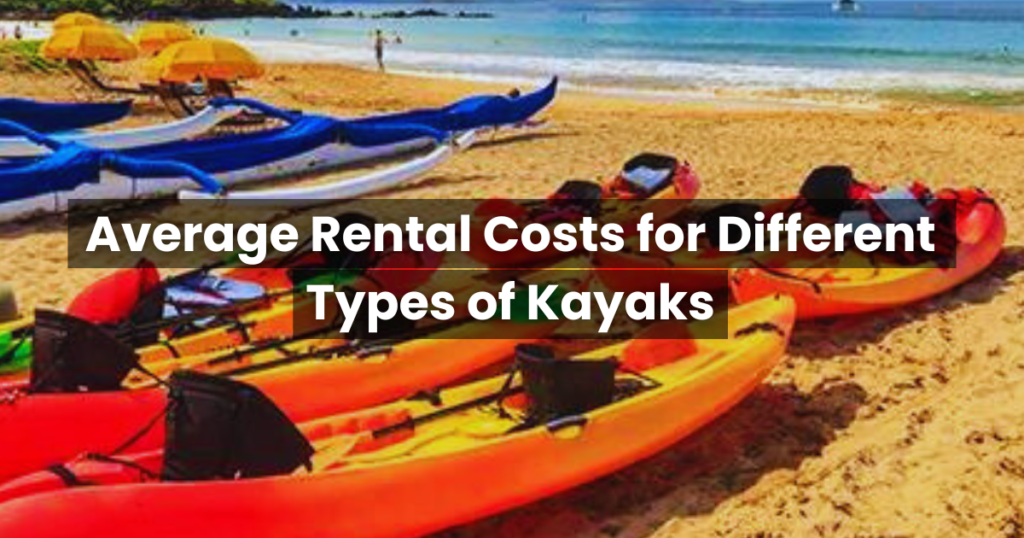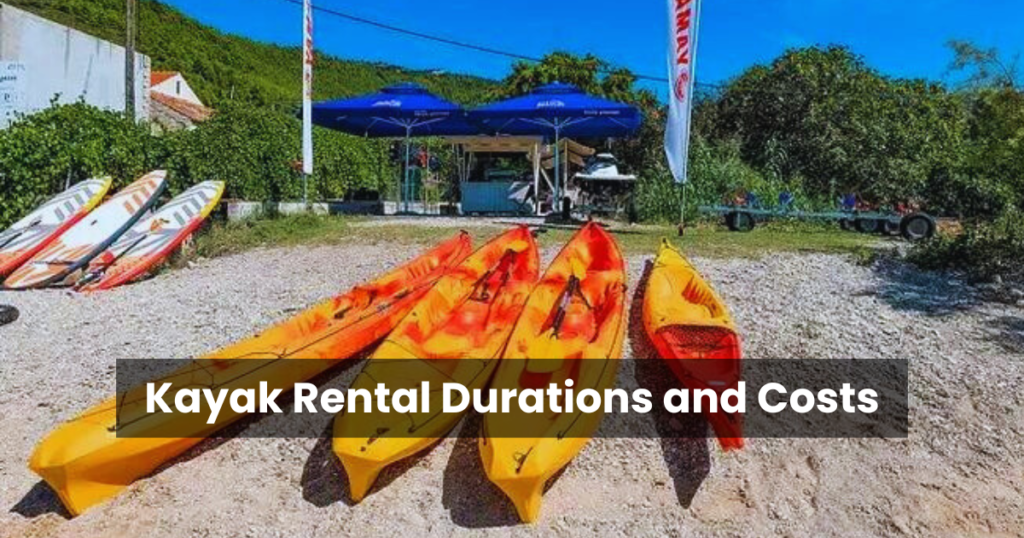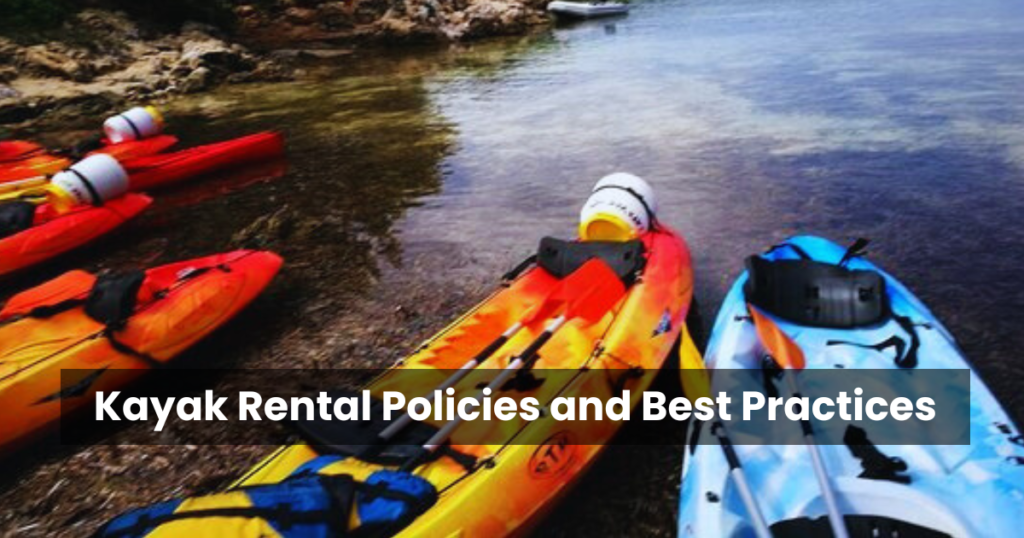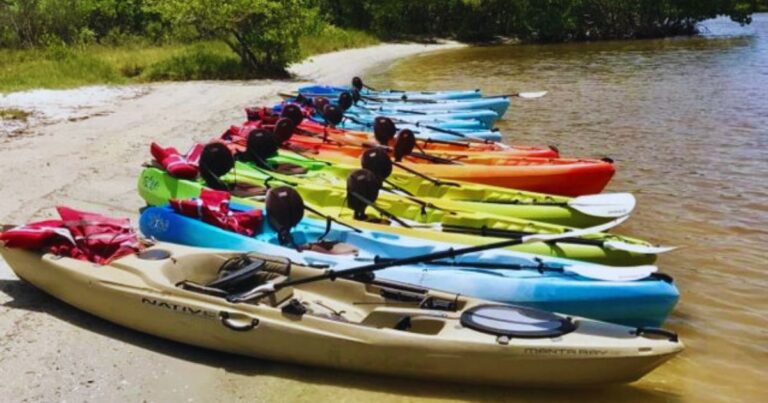Kayaking has surged in popularity as an accessible and enjoyable water activity, offering a unique blend of exercise, relaxation, and adventure. Whether you’re planning a serene paddle on a tranquil lake or an exciting coastal exploration, one of the first questions that likely comes to mind is: How much does it cost to rent a kayak? Understanding the costs associated with kayak rentals is crucial for both budgeting your outdoor adventures and ensuring you get the best value for your money.
The cost of renting a kayak can vary significantly based on numerous factors, from the type of kayak you choose to the location and duration of your rental. In this comprehensive guide, we’ll dive deep into the world of kayak rentals, exploring every aspect that influences pricing. We’ll uncover the average costs you can expect, reveal hidden fees you should watch out for, and share insider tips on how to save money without compromising on your kayaking experience.
Average Rental Costs for Different Types of Kayaks

When planning a kayaking adventure, one of the key considerations is the cost of renting a kayak. Prices can vary widely based on the type of kayak you’re looking to rent. Here’s a guide to what you might expect to pay for different types of kayaks:
1. Recreational Kayaks: These are typically the most budget-friendly option, ideal for calm waters and short trips. On average, you can expect to rent a recreational kayak for about $20 to $40 per hour.
2. Touring Kayaks: Built for endurance and longer trips, touring kayaks come with a higher price tag due to their advanced features. The rental cost for these kayaks usually ranges from $40 to $60 per day.
3. Fishing Kayaks: With amenities tailored for anglers, such as rod holders and increased stability, fishing kayaks are on the higher end of the rental spectrum. Expect to pay between $50 to $100 for a full day’s rental.
4. Tandem Kayaks: These kayaks are designed for two people, which can be a cost-effective way to enjoy kayaking with a companion. The average hourly rate for a tandem kayak is around $30 to $50.
5. Inflatable Kayaks: Offering the convenience of easy transport and storage, inflatable kayaks are a great option for those on the go. They are also quite affordable, with rates similar to recreational kayaks, around $20 to $40 per hour.
Kayak Rental Durations and Costs

When renting a kayak, understanding the various rental durations and their associated costs is crucial for planning your adventure. Here’s a comprehensive look at what you can expect:
Hourly Rates: Ideal for short excursions or those new to kayaking, hourly rentals provide flexibility. The cost typically ranges from $10 to $25 per hour, allowing for a quick jaunt without a significant investment.
Half-Day Rates: A half-day rental, usually about four hours, is perfect for those who wish to spend more time on the water without committing to a full day. Prices for half-day rentals generally fall between $35 and $65.
Full-Day Rates: For paddlers desiring to make the most of their day, full-day rentals are available. These usually cover an eight-hour period and can cost anywhere from $45 to $75, offering a full day of exploration at a reasonable rate.
Multi-Day or Weekly Rates: Those planning an extended adventure can opt for multi-day or weekly rentals. This option provides the best value per day, with weekly rates ranging from $150 to $300, depending on the rental company and kayak type.
Location: The Impact on Kayak Rental Costs

The location where you choose to rent a kayak can have a significant impact on the cost. Here’s how urban and rural areas, as well as popular tourist destinations versus lesser-known spots, can affect the price of kayak rentals:
Urban vs. Rural Areas: Kayak rentals in urban areas are often more expensive due to higher demand and the increased cost of operating a business in a city. You might find a wider variety of kayaks available, but you’ll likely pay a premium for the convenience and accessibility. In contrast, rural areas may offer lower rental rates as the overhead costs are typically less, and there is often less demand. However, the selection of kayaks might be more limited.
Popular Tourist Destinations vs. Lesser-Known Spots: Popular tourist destinations usually charge higher rates for kayak rentals. The combination of high demand, prime location, and the tourist-oriented economy means you’ll often pay more for the experience. For example, renting a kayak in a national park or a renowned beach could cost significantly more than in a non-tourist area.
On the other hand, lesser-known spots can provide more affordable rental options. These areas might not have the same level of infrastructure or variety as tourist hotspots, but they offer a more budget-friendly and often more tranquil kayaking experience. Plus, paddling in a less crowded environment allows for a more intimate connection with nature.
It’s also worth considering that some lesser-known locations may offer unique kayaking experiences that can’t be found in more popular areas. Whether it’s paddling through secluded waterways or exploring untouched natural beauty, the value of these experiences can far exceed the cost savings.
Seasonal Demand and Pricing Strategies
In the dynamic world of commerce, understanding and adapting to seasonal demand is crucial for businesses aiming to maximize profitability. Seasonal demand refers to fluctuations in consumer interest and purchasing behavior that occur at specific times of the year, often influenced by factors such as holidays, weather changes, and cultural events.
Peak Season Pricing: During peak seasons, when demand is at its highest, businesses often implement peak season pricing strategies. This involves increasing prices to capitalize on the heightened demand. For instance, travel and hospitality industries typically raise their rates during holidays and summer months when more people are looking to book vacations.
Off-Season Discounts: Conversely, during off-season periods when demand wanes, businesses may offer discounts to stimulate sales. This is a common practice in sectors like tourism, where hotels and airlines provide lower rates to attract customers during slower periods.
Weekday vs. Weekend Rates: The dichotomy between weekday and weekend rates is another aspect of seasonal pricing. Hotels, for example, may offer lower rates on weekdays when occupancy is lower and increase prices on weekends when demand spikes. Similarly, entertainment venues like cinemas may offer discounted tickets on weekdays to boost attendance.
Developing a Pricing Strategy: To develop an effective seasonal pricing strategy, businesses must first identify their peak and off-peak periods. This requires analyzing sales data, market trends, and consumer behavior. Once these periods are established, businesses can set minimum and maximum price thresholds to ensure profitability while remaining competitive.
Implementing a seasonal pricing strategy also involves communication with customers. Transparency about pricing changes can help maintain trust and prevent potential dissatisfaction due to unexpected costs.
Challenges and Considerations: While seasonal pricing can be beneficial, it also presents challenges. Price inconsistencies can confuse customers, especially if they notice significant fluctuations within short periods. To address this, businesses may test pricing strategies on specific customer segments before a full rollout.
Moreover, businesses must be mindful of their reputation and customer loyalty. Excessive price hikes during peak periods or perceived unfairness in pricing can lead to negative reviews and loss of repeat business.
Package Deals and Group Rates for Travel
Traveling can be one of life’s most enriching experiences, offering opportunities to explore new places, cultures, and create lasting memories. However, planning a trip can also be overwhelming and expensive. This is where package deals and group rates come into play, providing a way to streamline the planning process and save money.
Family Packages: Family packages are designed to cater to the needs of families traveling together. These deals often include accommodations, meals, and activities that are family-friendly, ensuring that every member of the family, from the youngest to the oldest, has an enjoyable experience. For example, all-inclusive resorts may offer kids’ clubs, entertainment, and access to local attractions, making them a popular choice for family vacations.
Group Discounts: Traveling in a group can unlock significant savings through group discounts. Whether it’s a group of friends, extended family, or a club, many travel providers offer reduced rates for group bookings. This can apply to accommodations, flights, and even attractions. Sites like Groupon and LivingSocial are known for offering deals that cater to groups looking to save on local and online purchases.
Tour Packages: Guided tour packages are perfect for those who prefer a structured travel plan with the guidance of experienced professionals. These packages often include a set itinerary with accommodations, transportation, meals, and exclusive access to sights and experiences. Travelers can enjoy the convenience of having all the details handled by experts, which can be especially beneficial when exploring unfamiliar destinations.
Ways to Save on Kayak Rental Costs
Off-Season Rentals: Renting a kayak during the off-season can be a savvy way to enjoy the waters without the peak season price tag. During slower periods, rental companies often offer significant discounts to attract customers. The benefits of renting during these times are not only financial; you’ll likely enjoy quieter waterways and have more choice of equipment. Typical off-season discounts can range from 10% to 50%, depending on the location and the rental company.
Loyalty Programs and Memberships: Many kayak rental companies offer loyalty programs that reward frequent renters with discounts or free rentals after a certain number of bookings. Additionally, memberships in outdoor organizations or clubs often come with perks such as discounted rates on rentals. These programs are designed to encourage repeat business and can offer substantial savings over time.
Comparison Shopping: To find the best kayak rental deals, it’s essential to do some comparison shopping. Start by checking out various rental companies’ prices and services. Online resources like kayak rental comparison websites can be invaluable, providing a platform to easily compare prices and options from different providers in your desired location.
Bringing Your Own Equipment: If you own personal kayaking gear like PFDs (Personal Flotation Devices) or paddles, bringing them along can reduce the rental cost. Some companies offer a discount for not needing to rent their equipment. However, it’s important to consider the logistics of transporting your equipment. Ensure that your vehicle is equipped to safely carry the gear to your destination.
Renting vs. Buying a Kayak: A Cost Comparison
When it comes to enjoying the serene waters, kayaking is a top choice for many outdoor enthusiasts. If you’re considering taking up this hobby, one of the first decisions you’ll face is whether to rent or buy a kayak. Let’s dive into a cost comparison to help you make an informed decision.
Initial Costs: Buying a kayak requires a significant upfront investment. A new kayak can range from $250 for a basic recreational model to over $1,000 for a specialized touring or fishing kayak. In contrast, renting a kayak can be as affordable as $10 to $50 per hour or about $40 to $80 for a full day, depending on the location and type of kayak.
Long-Term Considerations: If you plan to kayak frequently, purchasing may be more economical over time. However, consider additional costs such as storage, transportation, and maintenance, which can add up. Renting eliminates these concerns and allows flexibility to try different kayak models and styles.
Convenience vs. Commitment: Renting offers the convenience of showing up and getting on the water without the commitment of ownership. It’s ideal for occasional kayakers or those who wish to explore different waterways without the hassle of transporting a kayak.
Quality and Features: Rental kayaks may be more generic and less tailored to specific activities compared to a personally owned kayak that you can customize to your preferences.
Kayak Rental Policies and Best Practices

When it comes to renting a kayak, understanding the rental policies and best practices can ensure a safe and enjoyable experience. Here’s what you need to know:
Reservation and Rental Duration: Most kayak rental services require reservations, especially during peak seasons. Rentals can range from a few hours to multiple days, so it’s important to plan accordingly and understand the rates, which often become more economical with longer rental periods.
Pricing Structure: The cost of renting a kayak can vary widely depending on the location, type of kayak, and rental duration. On average, you can expect to pay anywhere from $10 to $30 per hour, $40 to $80 for a half-day rental, or $50 to $120 for a full day. Some places may offer discounts for multi-day rentals.
Safety Equipment and Instructions: Rental services should provide essential safety equipment, such as life jackets and helmets, and basic instructions on how to use the kayak. Ensure you’re comfortable with the kayak’s operation before heading out.
Age and Skill Requirements: There may be age and skill requirements for renters. Some locations require renters to demonstrate basic paddling skills or may restrict rentals based on age to ensure safety.
Deposit and Cancellation Policies: A security deposit might be required, which is usually refundable upon the safe return of the kayak. Additionally, familiarize yourself with the cancellation policy to avoid any unexpected charges.
Environmental Considerations: Respect local wildlife and habitats by following guidelines for responsible kayaking. This includes not disturbing animals and adhering to no-go zones to protect sensitive ecosystems.
Popular Kayaking Destinations and Their Rental Costs
Kayaking is a thrilling way to explore the beauty of nature from a unique vantage point on the water. Whether you’re gliding through serene lakes or navigating the twists and turns of a meandering river, each stroke of the paddle brings you closer to the heart of the great outdoors. For those looking to embark on such an adventure, understanding the costs associated with renting a kayak is essential.
The cost of renting a kayak can vary significantly depending on the location and the quality of the equipment offered. For instance, kayaking in the picturesque Bear Glacier Lagoon in Alaska offers an otherworldly experience among icebergs and wildlife, with rental costs ranging from $325 to $650 per person, which includes transportation to the lagoon, a kayak, drysuit, and other necessary gear. This destination is suitable for all ability levels and promises an unforgettable journey through one of Alaska’s natural wonders.
On the other hand, destinations like the Boundary Waters Canoe Area Wilderness in Minnesota provide a more secluded and untamed beauty, appealing to those who seek tranquility amidst the wilderness. The rental costs here, and in similar locations, can be more affordable, starting from around $20 to $40 for a few hours of rental time. Full-day rentals and guided tours can increase the price to over $100, offering extended exploration opportunities and expert guidance for a safer and more informative experience.
It’s important to note that these costs are often inclusive of essential gear such as life vests, paddles, and basic instruction, ensuring that even beginners can enjoy their kayaking adventure with peace of mind. Additionally, many rental services offer discounts for longer rental periods or group bookings, making it a cost-effective option for families and friends to enjoy together.
When planning your kayaking trip, consider the type of experience you’re looking for, the duration of your adventure, and the level of comfort you desire. With a range of options available, from budget-friendly hourly rentals to premium guided excursions, there’s a kayaking experience to suit every preference and budget. So, grab your paddle and prepare to explore the waters in a way that only kayaking can offer.
Conclusion
Understanding how much it costs to rent a kayak is essential for planning your water adventures. As we’ve explored throughout this guide, the price can vary significantly based on factors such as kayak type, rental duration, location, season, and additional equipment. On average, you can expect to pay anywhere from $30 to $100 per day for a kayak rental, with hourly and weekly rates offering different value propositions. Remember, the cheapest option isn’t always the best consider your needs, experience level, and the quality of equipment when making your choice.
FAQs About Kayak Rental Costs
What’s included in the basic rental price?
The basic rental price for a kayak typically includes the kayak itself, a paddle, and a life vest. Some rental companies may also offer additional equipment such as a helmet or a spray skirt at no extra cost. It’s important to check with the rental provider for the specifics of what’s included.
Are there any age restrictions for renting a kayak?
Yes, most kayak rental companies have age restrictions in place, often requiring renters to be at least 18 years old. However, minors are usually allowed to kayak if accompanied by an adult. Always verify the age requirements with the rental company before planning your trip.
Do I need previous experience to rent a kayak?
Previous experience is not always required to rent a kayak, but it is highly recommended. Some rental companies offer brief training sessions or require that inexperienced kayakers stay within a certain proximity to the shore or rental location.
Can I rent a kayak for multiple days?
Absolutely, many rental services offer multi-day rental options. The cost may decrease per day as the rental period extends, so this can be a cost-effective option for longer trips.
Are there discounts for renting multiple kayaks?
Group discounts are common with kayak rentals. Renting multiple kayaks often comes with a reduced rate per unit, making it more affordable for families or groups.
What happens if the kayak is damaged during my rental period?
In the event of damage, rental agreements typically include a clause that holds the renter responsible for repair costs. Some companies offer damage protection plans for an additional fee. Always review the terms and conditions related to damages before renting.

Nigel Foster, born in 1952, is an esteemed sea kayaker, known for being the youngest to kayak around Iceland. His journey in kayaking started at 15 in Brighton, England. With a career beginning as a trainee instructor in Sussex, he later pursued teaching after attending Redland College, Bristol.
Foster’s notable expeditions include navigating the challenging waters of Newfoundland and the Hudson Strait. Despite facing intense conditions, his passion for kayaking never waned. He holds several British Canoe Union qualifications and has significantly contributed to the kayaking community through teaching and committee work.
In 1985, Foster expanded his horizons by assisting an expedition in Iceland and later founded his own kayaking business, sharing his expertise globally.
